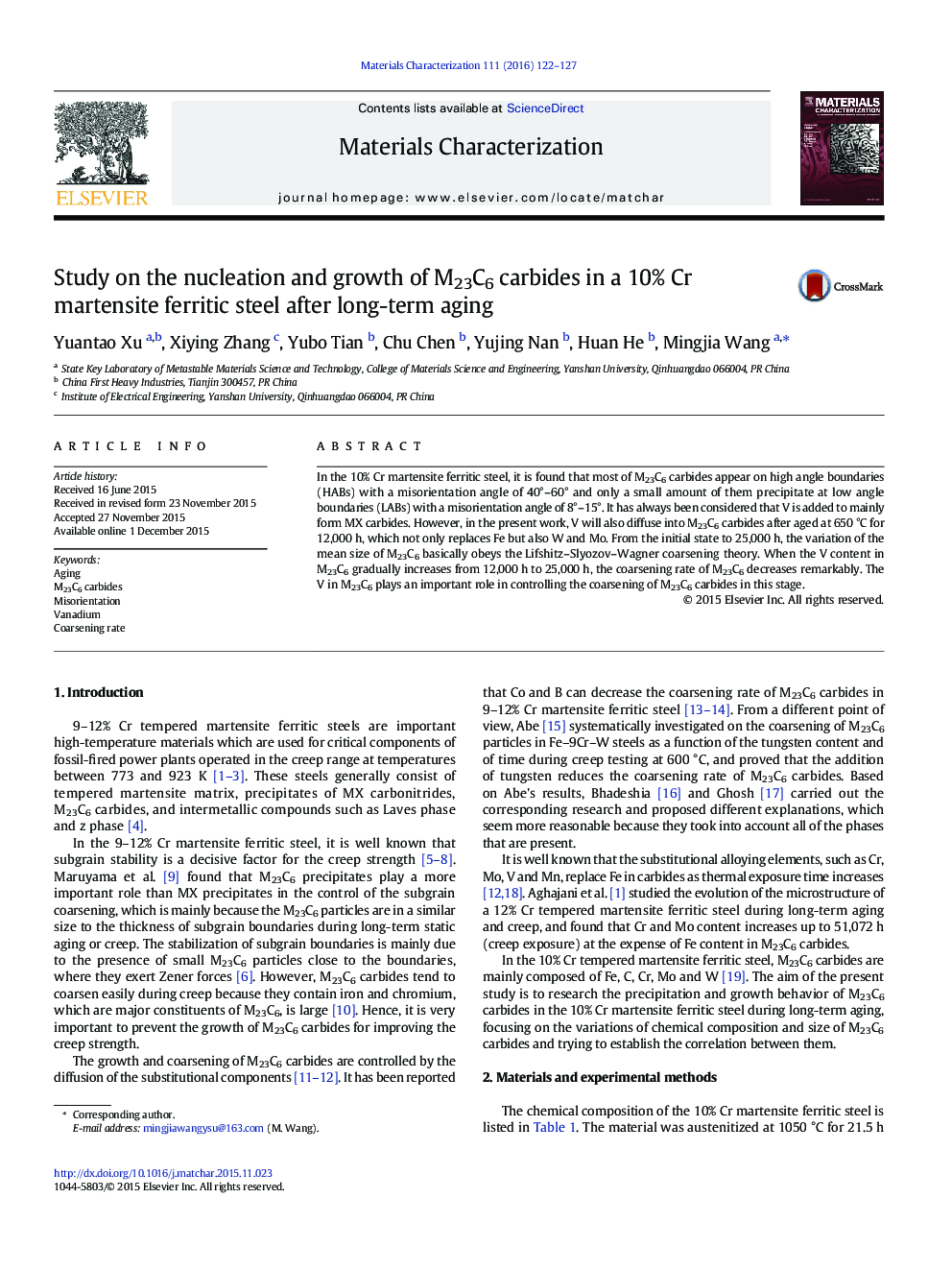| Article ID | Journal | Published Year | Pages | File Type |
|---|---|---|---|---|
| 1570781 | Materials Characterization | 2016 | 6 Pages |
•Having used EBSD and TEM to investigate the nucleation and growth of M23C6.•Most of M23C6 appear on boundaries of 40°–60° and few of them at 8°–15°.•V goes to M23C6 after aged at 650 °C for 12,000 h, which could replace Fe, W and Mo.•V in M23C6 plays an important role in controlling the coarsening of M23C6.
In the 10% Cr martensite ferritic steel, it is found that most of M23C6 carbides appear on high angle boundaries (HABs) with a misorientation angle of 40°–60° and only a small amount of them precipitate at low angle boundaries (LABs) with a misorientation angle of 8°–15°. It has always been considered that V is added to mainly form MX carbides. However, in the present work, V will also diffuse into M23C6 carbides after aged at 650 °C for 12,000 h, which not only replaces Fe but also W and Mo. From the initial state to 25,000 h, the variation of the mean size of M23C6 basically obeys the Lifshitz–Slyozov–Wagner coarsening theory. When the V content in M23C6 gradually increases from 12,000 h to 25,000 h, the coarsening rate of M23C6 decreases remarkably. The V in M23C6 plays an important role in controlling the coarsening of M23C6 carbides in this stage.
Graphical abstractFig. 2. TEM BF images including SAED patterns and chemical composition of particles of the 10% Cr steel during long-term aging: (c) 650 °C/25,000 h.From Fig. 2(c), it is found that the size of M23C6 increases slightly with increasing aging time from 12,000 h to 25,000 h, and V content in M23C6 increases to 6.35 ± 0.8 wt.%. In addition, some sphere-like M23C6 carbides appear on martensite lath boundaries.Figure optionsDownload full-size imageDownload as PowerPoint slide
